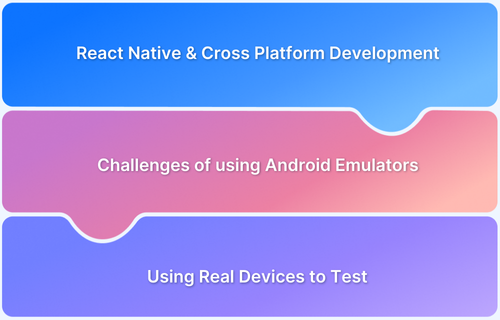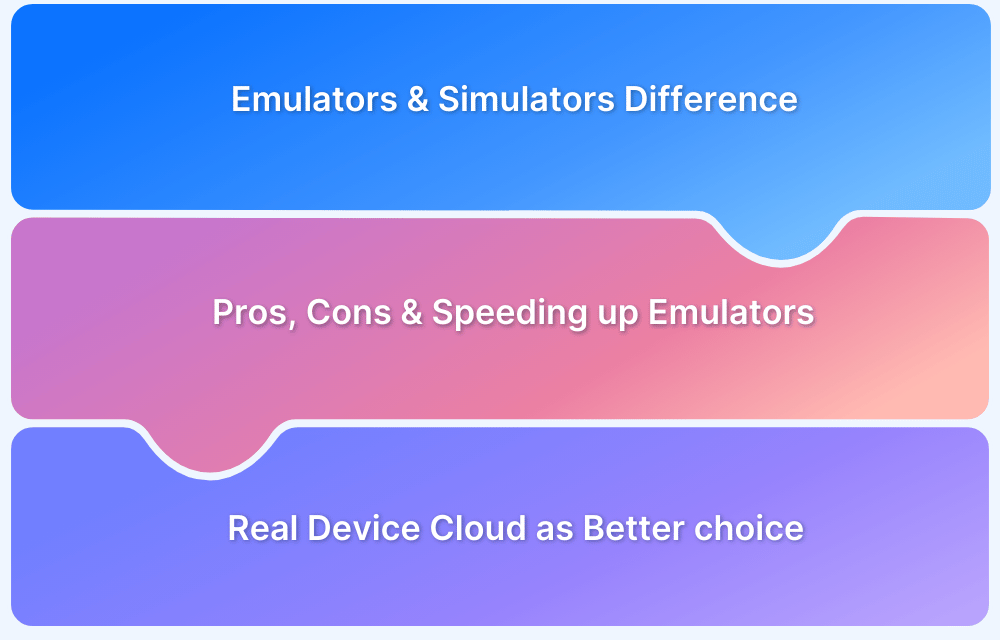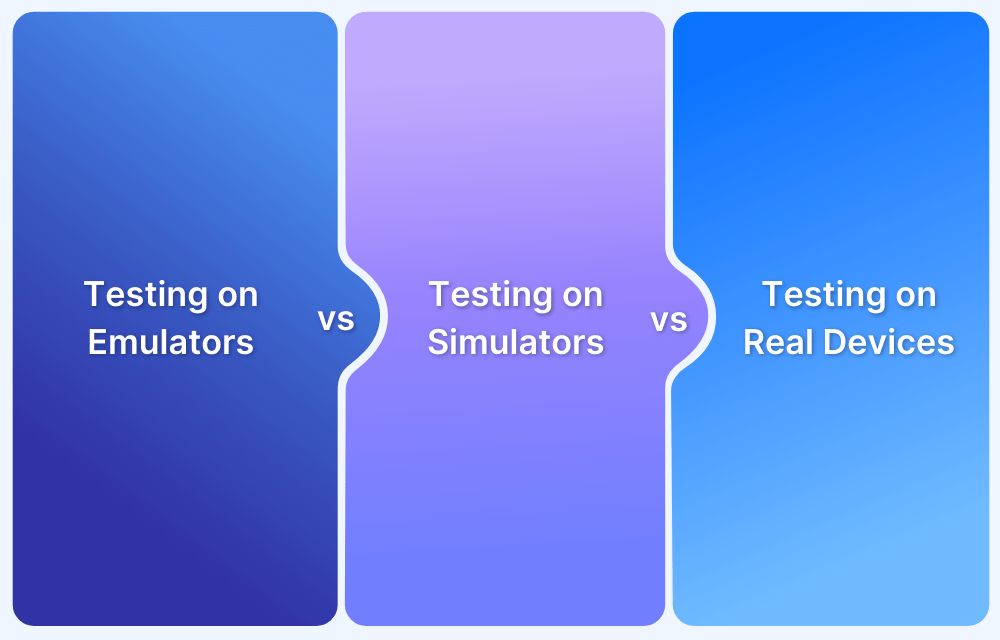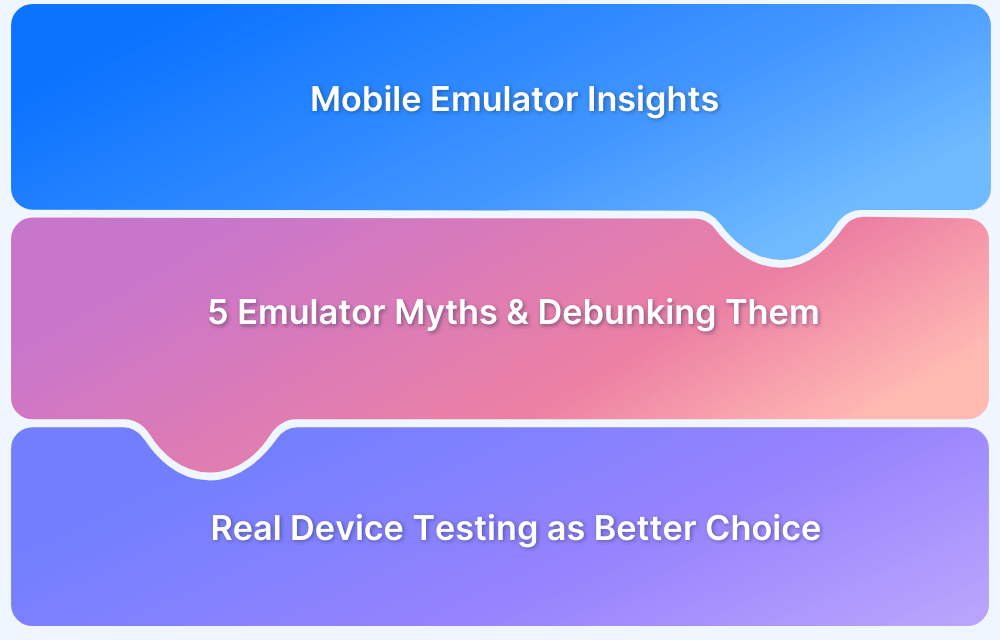Testing React Native apps on emulators can be limiting, as they fail to replicate real-world user conditions like network fluctuations, hardware differences, and OS variations.
While emulators are useful for initial development, they lack accuracy in performance testing, battery usage, and real-device interactions. Testing on real Android devices is crucial to ensure a flawless user experience.
This article explores why replacing Android emulators with real devices improves testing accuracy for seamless React Native app testing.
What is React Native?
React Native is an open-source JavaScript framework, meant to build apps compatible with multiple platforms – iOS, Android, and web apps. The appeal is that it allows the creation of one codebase that forms the foundation of apps meant to operate on different platforms. In other words, with a single codebase, you can develop user-ready apps compatible with various platforms and operating systems.
React Native leverages JavaScript to compile the app’s UI. But a crucial difference from other frameworks is that it uses native-OS views, allowing cross-platform compatibility. Additionally, you can choose to implement code in OS-native languages – Swift and Objective-C for iOS, and Java and Kotlin for Android.
Fundamentally, React Native is considered ideal for cross-platform development.
Must Read: How to approach Cross Platform Testing
What is Cross-platform development in React Native?
Cross-platform development allows developers to build applications for multiple operating systems using a single codebase.
React Native, one of the most popular frameworks for this approach enables seamless deployment on both iOS and Android without the need for separate development efforts.
By eliminating the need to write distinct code for each platform, teams can accelerate development, reduce costs, and streamline maintenance. This efficiency is crucial for businesses aiming for faster time-to-market while ensuring a consistent user experience across devices.
However, accurate testing is key to achieving these benefits. While emulators may seem convenient, they fall short in replicating real user conditions, making real device testing essential for delivering high-performance React Native apps.
Also Read: UI Testing of React Native Apps
Importance of Testing React Native Apps
Below are the key benefits of testing React Native Apps:
- Ensures Code Stability: Identifies and fixes bugs early to prevent unexpected crashes.
- Improves App Performance: Optimizes load times, responsiveness, and resource usage.
- Enhances UI/UX Consistency: Ensures smooth animations, layouts, and interactions across screens.
- Validates Business Logic: Confirms that core functionalities work as expected.
- Prevents Regression Issues: Detects unintended changes after updates or new feature additions.
- Speeds Up Development: Automated and continuous testing helps catch issues early, reducing debugging time.
- Boosts Security: Identifies vulnerabilities to protect user data and app integrity.
- Ensures Third-Party Integrations Work: Verifies smooth functioning of APIs, plugins, and libraries.
Test React Native Apps on Real Devices
Challenges of Using Android Emulators to Test React Native Apps
Below are the key reasons why you shouldn’t use Android emulators to test react native apps:
- CPU Architecture Mismatch: Most Android devices use ARM processors, while most PCs run on x86, leading to poor emulation performance.
- High Storage Consumption: Each virtual device requires significant disk space (up to 3.5 GB), slowing down the system.
- Performance Issues: Multiple emulators running simultaneously can cause lag, crashes, and reduced productivity.
- Unreliable Hardware Acceleration: Setting up acceleration is complex and may lead to system failures.
- Limited Native Interaction Testing: Emulators can’t replicate real device conditions like touch gestures, brightness adjustments, or background processes.
- Inaccurate Test Results: Emulators fail to provide a true representation of app behavior in real-world scenarios.
- Not Suitable for Final Testing: Due to their limitations, emulators can’t be relied upon for approving apps for production release.
Why Test React Native Apps on Real Android Devices?
Testing React Native apps on real Android devices is essential for ensuring accurate, real-world performance. Emulators often fall short in replicating actual user conditions, making real devices the best choice for reliable test results.
Below are the key reasons why you should test React Native Apps on real devices:
- Accurate Performance Metrics: Real devices provide precise insights into CPU, GPU, battery, and memory usage, ensuring the app runs smoothly without lag or excessive resource consumption.
- Reliable User Interaction Testing: Native touch gestures, screen brightness, and background processes cannot be accurately replicated on emulators.
- Scalability & Compatibility: Testing on real devices ensures the app works seamlessly across various Android versions, screen sizes, and hardware configurations.
- Real-World Network Conditions: Unlike emulators, real devices allow testing under real network conditions, including fluctuating bandwidth, latency, and connectivity issues.
- Comprehensive Test Coverage: Functional, performance, accessibility, and localization testing require real-world environments to guarantee an optimal user experience.
Use BrowserStack to Test React Native Apps on Real Devices
Setting up an in-house device lab is costly and time-consuming. BrowserStack App Live offers a real device cloud that eliminates this hassle, providing instant access to thousands of Android devices for manual and automated testing.
- Test on the latest and older Android devices without managing physical hardware.
- Use App Live for manual testing and App Automate for automated testing with integrations like Appium, Espresso, and XCUITest.
- Advanced Debugging Tools that oncludes Screenshots, Video Recording, Video-Log Sync, Appium Logs, Network Logs, and App Profiling.
- Conduct geolocation testing, network throttling, responsive testing, and accessibility testing with real devices.
- Parallel testing speeds up test cycles by up to 10X, ensuring faster time-to-market.
Useful Resources for React Native
- What is React Native? (The Essential Guide)
- Replace Android Emulator to test React Native
- End-to-End React Native Testing
- Top 5 React Native UI Components
- React vs React Native: When to use which?
- How to make React Native App Responsive?
- UI Testing of React Native Apps
- Test React Native Apps with Cypress
- React Native and Appium Tutorial
- How to Test React Native Apps on iOS and Android Devices
Conclusion
Replacing Android emulators with real device testing is crucial for ensuring the accuracy and reliability of React Native app performance. While emulators can be useful in some cases, they fall short in replicating real-world conditions, leading to incomplete or inaccurate test results.
Using a real device cloud platform like BrowserStack allows developers and testers to access various real Android devices for thorough testing, ensuring better, more reliable apps.





